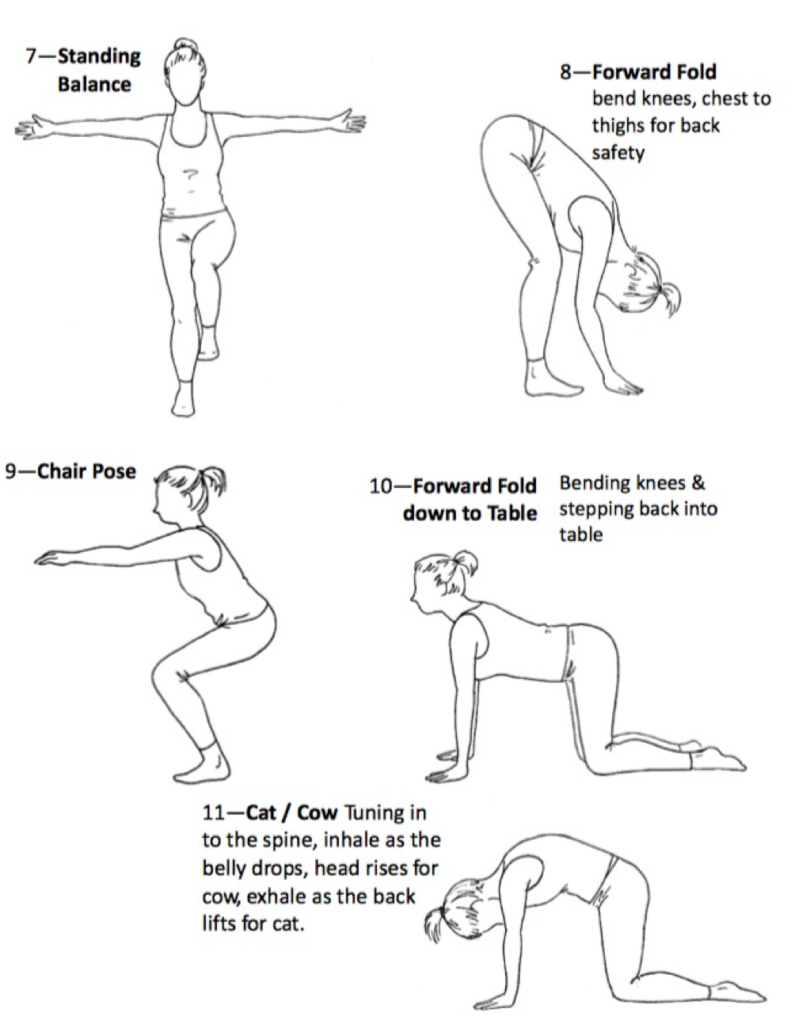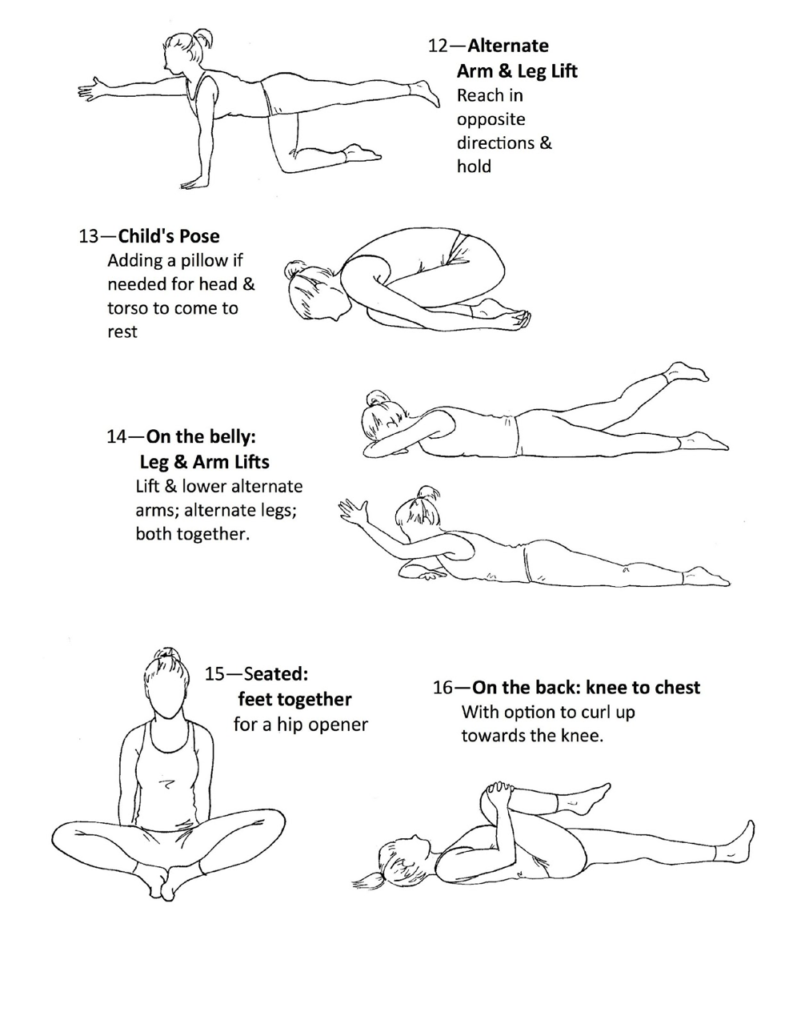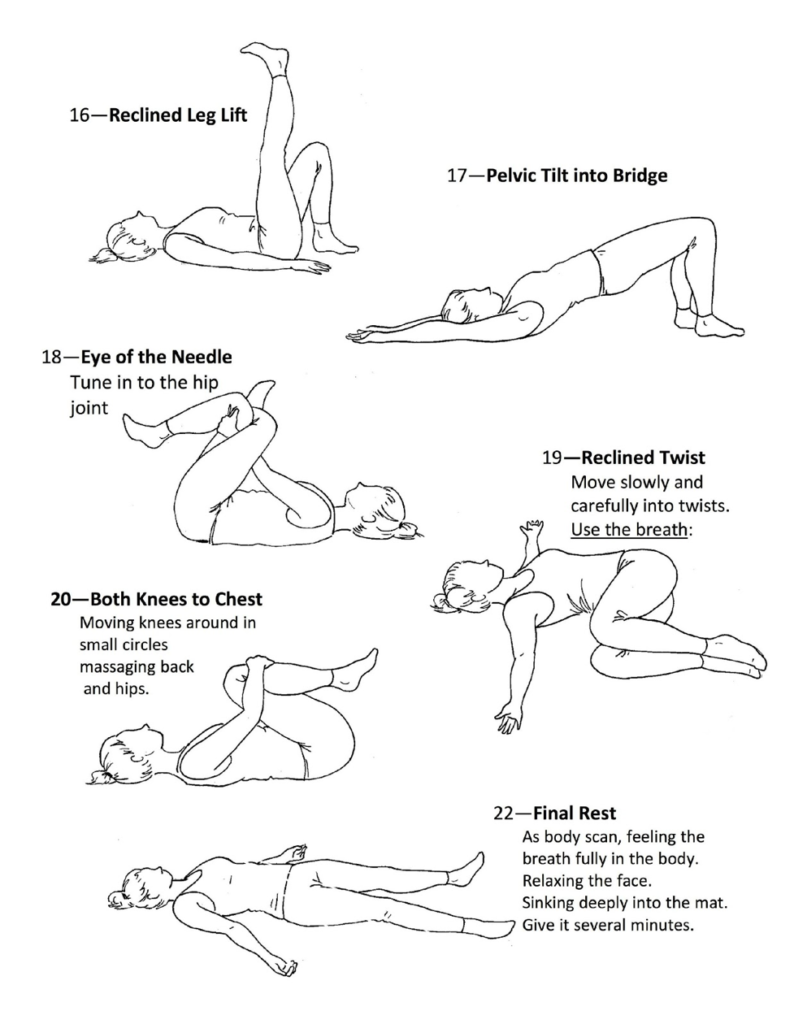Mindful Movement with Gentle Yoga
Yoga can develop strength, balance, flexibility and body awareness. Our mindful yoga emphasizes awareness and balance. Poses are done carefully and slowly and attention is held inside the body. Please consider the following as you practice mindful yoga:
- Limits – Experiment with staying at your limits longer than you might otherwise. This will develop an ability to explore limits and will eventually expand those limits that are not beneficial. Avoid pushing past your limits. Play with the edges.
- Breathe – After doing a pose (or anything else), momentarily bring attention back to the breath as a means of letting go of distractions and being present in the moment.
- Pause – Lie still after each pose to tune into the consequences of having done the pose. Take time to see what you’ve done and what effect it has. This reinforces your ability to connect cause and effect in regard to stress.
- Notice Judgments – Notice judgmental thoughts that arise about the body: about its appearance, limitations, and so on. Practice noticing these thoughts as thoughts and then return attention to the body.
- Distracted Mind – Notice that even when you’re intending to focus on the yoga, you are often distracted. Watch the distracting thoughts and their contents, without indulging in following them. Make an effort to let go of the distractions and bring the mind back to the experience of the pose. Come back to the feeling of this moment.
- Relaxation – Practice dropping down into a state of relaxation between poses. This is not a doing but rather a non-doing. Feel a cessation of activity, and perhaps a letting go. One of the sensations may be feeling how gravity pulls the body down.
- Fatigue – Bring awareness to fatigue of your muscles during poses. Outside of yoga, this same awareness will help you see when you’re fatigued and may help you see (in the moment) what’s causing the fatigue. Practice “tuning-in” to subtle messages from the body.
- Reactivity – Are there things about the yoga that “rub you the wrong way”? What are they? What’s to be learned? Use frustration, anxiety, and fear as a path to learning about yourself.
Recorded instructions for this sequence





